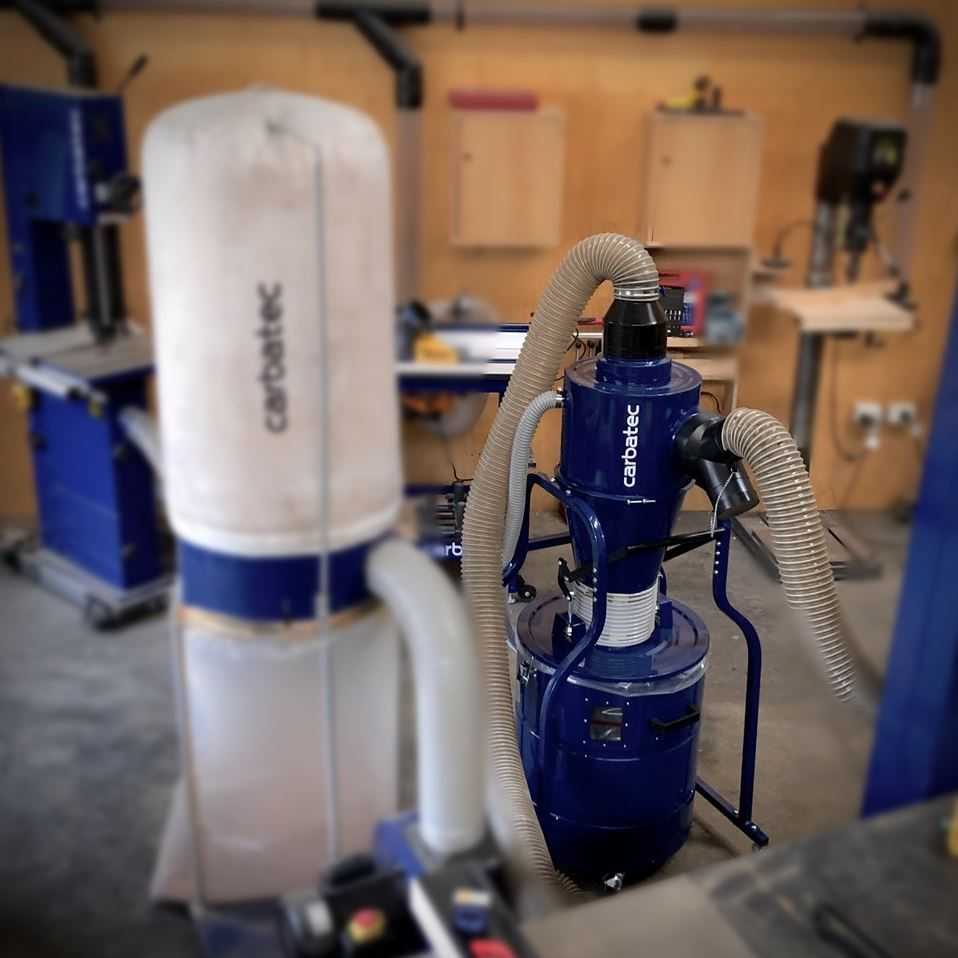Understanding your machine’s Dust Extraction requirements

All woodworking machines require effective Dust extraction to ensure quality work and longevity of the machine itself.
Failure to connect your machine to a suitable dust collector may affect your warranty.
Benchtop Machinery
Just because a machine is small and portable, doesn't mean that dust extraction is less important.
Shavings and dust can build in the smaller dust chutes and guards and the smaller outlet sizes won’t allow unaided or self-powered chip ejection.
Most benchtop machines can be connected to a 1 or 2HP Machine, with plenty of options in step down adaptors and fittings. The best efficiency is gained by running the largest possible diameter hose from your dust collector to the machine, stepping down immediately before connection.
You can connect some benchtop machines directly to a portable workshop vacuum cleaner (Scroll Saw or maybe a small benchtop band saw etc), but a larger dust port would usually indicate the need for a higher volume of air flow only produced by a dedicated dust collector. Most 'shop-vac' type machines on the Australian market lack the large diameter hose required to move wood shavings effectively, leaving your dust chute clogged, potentially damaging your machine. A factory fitted dust connection under 50mm diameter is usually a sign that connection to 'shop-vac' and similar machines will be okay. A larger fitting, will indicate that connection to a dedicated dust collector (with a minimum 100mm hose) will be required.
Click here to view our Dust Control range.
Freestanding Bandsaws & Table Saws
Lower volume waste producing machines (with smaller particles) such as bandsaws & table saws require a minimum airflow rating between 400 - 500 CFM to work efficiently and not affect the machine’s warranty.
CFM requirement is measured at the point where the dust hose is connected to your machine’s dust port, which is very different to the rated CFM of your dust collector. Loss of suction across your dust network (regardless of how basic it may be) reduces with every meter of flexible hose, bend, blast gate or reduction fitting installed.
We recommend a minimum of a 1HP (approx. 500CFM) dust collector, situated in close proximity to your machine, although a 2HP collector is preferable, as the footprint and location of a Table Saw usually sees the dust collector positioned further away. Equivalent CFM airflow should be matched if installed in an existing dust network.
Click here to view our Dust Control range.
Non-Benchtop Thicknessers, Jointers & all Router Tables
High volume waste producing machines (such as thicknessers, jointers & router tables) require a minimum airflow rating at the machine, between 750 and 950 CFM to work efficiently and not affect the machine’s warranty.
CFM is measured at the point where the dust hose is connected to your machine’s dust port, which is very different to the rated CFM of your dust collector. Loss of suction across your dust network (regardless of how basic it may be) reduces with every meter of flexible hose, bend, blast gate or reduction fitting installed.
We recommend a minimum of a 2HP (approx. 1200CFM) dust collector, situated in close proximity to your machine, or an equivalent CFM airflow if installing in an existing dust network.
Click here to view our Dust Control range.
Wide Drum, Belt/Disc and most Sanders
Most Sanders, despite their lack of heavy waste production, require significant CFM rating to remove the dust and keep the sandpaper from clogging prematurely, both types requiring in excess of 950 CFM at the machine to work efficiently and not affect the machine’s warranty.
CFM is measured at the point where the dust hose is connected to your machine’s dust port, which is very different to the rated CFM of your dust collector. Loss of suction across your dust network (regardless of how basic it may be) reduces with every meter of flexible hose, bend, blast gate or reduction fitting installed.
We recommend a minimum of a 2HP (approx. 1200CFM) dust collector, situated in close proximity to your machine, or an equivalent CFM airflow if installing in an existing dust network. Small benchtop spindle sanders may have a smaller fitting allowing connection to 'shop-vac' type collectors, but if you see dust still floating around as you use them, a larger collector (with more CFM) may be required.
Click here to view our Dust Control range.
|